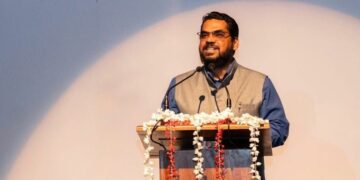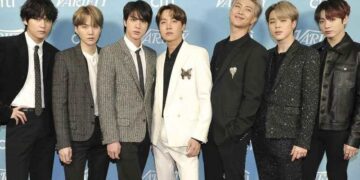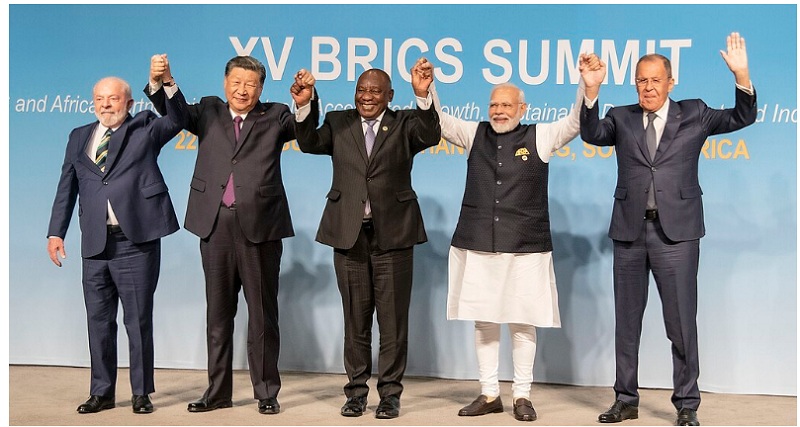By Avinash Godbole
India-China bilateral relations seem to be progressing rapidly after a series of recent events. In his first visit to China in seven years, Prime Minister Narendra Modi attended the Shanghai Cooperation Organisation (SCO) summit in Tianjin, shortly after Chinese Foreign Minister Wang Yi’s New Delhi visit where the two countries agreed to the early harvest principle, in place of the earlier agreement on the package deal settlement, to relook at the border dispute.
There does appear to be a thaw in India-China ties, especially in the backdrop of the US’ tariff strike against India. Attempts to bring bilateral ties back on track began in the winter of 2024 when Trump’s presidential election victory appeared increasingly certain and New Delhi-Beijing bilateral ties have since progressed with each of his protectionist steps that have hurt Indian and Chinese economies, and affected their status in global politics.
While the Tianjin meeting between Modi and Chinese President XI Jinping is a definite forward movement from “confrontation to conversation”, there have been indications that flights between India and China would resume even as there is no concrete announcement on this yet.
India-China bilateral relations reached a nadir after the June 2020 Galwan clashes in which 20 Indian soldiers and an unspecified number of Chinese soldiers lost their lives. This followed a “diplomatic freeze”. There has still been no de-escalation and disengagement as 50,000 troops remain in the general areas near the Line of Actual Control (LAC).
However, in October last year, India and China announced the start of a disengagement process, although the Indian government is yet to make it clear whether the restoration of status quo ante as of the summer of 2020 has been achieved. Nonetheless, the disengagement was followed by a National Security Adviser level dialogue in December 2024 and subsequently the visit to China of Indian Foreign Secretary Vikram Misri.
Potential friction areas
Now, even after Wang Yi’s visit to Delhi and Modi’s trip to Tianjin, China’s weaponisation of its exports, its relations with Pakistan and its hydropower projects in Tibet overshadow the prospects of progress in normalisation of ties.
These thorny issues raise several questions: Have the structural challenges in bilateral relations, which led to the Galwan clashes, been addressed? Have the policies adopted and implemented at the time been fruitful? More importantly, does India need to do something different at home and abroad to address any Chinese challenge in the future? Does India have a distinct internal policy to deal with China?
In the aftermath of the Galwan clashes, India cut down investments from China and banned Chinese apps and companies in the digital space.
India also had a production linked incentive (PLI) scheme for active pharmaceutical ingredients (API) and med-tech production. Successes on these fronts have been modest. For instance, India imported almost US$ 42 billion worth of API in 2023-24. Of this, US$ 29 billion worth was from China, whereas the PLI-linked sale of domestic production in 2024 was merely US$ 1.3 billion.
During the peak Covid period in 2021, it was announced that India still imported 70 percent of its medical equipment China. India’s total import bill for these stood at US$77 billion in 2021-22. Of this, nearly US$15 billion was from China.
On the other hand, PLI-linked production of such devices was worth US$ 10 billion. There are similar reports related to critical minerals, solar panels, automobile components, including battery components for electric vehicles, consumer electronics and other products. Evidently, more needs to be done in this field.
Secondly, China has invested well in its industrial, policy and academic research fields and addressed issues surrounding academia-industry integration. India could take lessons from China on the seamless engagement between academia and industry that has enriched R&D and the government’s decision to free this sector from excessive bureaucratic oversight and interference.
If the volume of academic publications is any indication, China is significantly ahead of India. The scientific and technical gap between India and China is widening. Clearly, there is a need for an honest reassessment of existing Indian policies in this sector.
Third, there is a need to revisit the broader concern over India-China economic engagement which did not progress on expected lines. Several agreements and memoranda signed in 2014 and 2015 have not translated into any qualitative upgrade of economic and social ties as bilateral trade remains largely of cash and carry nature.
There is reluctance on the part of Chinese companies to invest in areas where there is little immediate profit or in areas that might increase India’s relative competitiveness.
China’s geostrategic designs
As for India, there are doubts over how genuine China would be in its geostrategic and geoeconomic intent, even as there are domestic constraints that hold back its economic growth. Without ironing out these differences, there may be little actual qualitative economic engagement leading to trust building.
Finally, globally China continues to challenge the idea of democracy and persists with reframing it in terms of governance, services delivery and people’s wellbeing.
As a developing country, India could challenge China’s development model and its attractiveness to the developing world. But India is falling behind in this effort. It would thus be in India’s interest to preserve its democratic robustness as a means to deal with China’s propaganda war.
China’s rise has been momentous and there is no reason to deny that it is a major challenge to India at multiple levels. Cyclical patterns of ups and downs with China will likely continue in the future as it pushes India to recognise its centrality in Asia.
In these circumstances, a significant part of India’s China policy must have domestic implications. The sooner New Delhi realises this, the better it would be in terms of bringing bilateral ties on an even keel.
Avinash Godbole is Professor, Jindal School of Liberal Arts and Humanities, O.P. Jindal Global University, Sonipat, Haryana.
Originally published under Creative Commons by 360info™.















